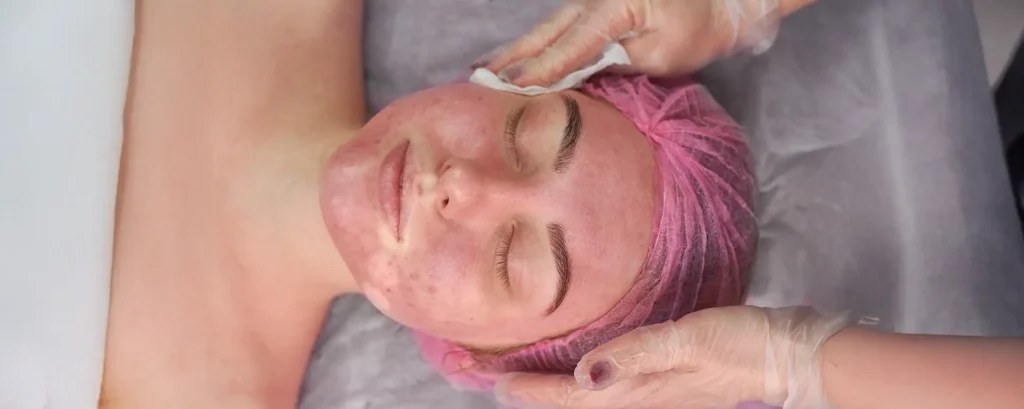When most people think about dermatologists in the UK, the image that often comes to mind is of quick, convenient appointments, straightforward access to highly trained experts, and plenty of specialists available to choose from. It’s easy to assume that seeing a skin specialist is as simple as booking a slot and turning up a week later.
However, the reality is often more complex and in many ways, surprising. While dermatology is a vital branch of medicine that deals with everything from acne and eczema to skin cancer detection, the number of practising dermatologists in the UK is far smaller than many expect. This shortage can affect how quickly patients are seen, what kind of care they receive, and even where in the country they’re able to access specialist services.
In this article, I’ll share 20 eye-opening statistics about dermatologists in the UK covering everything from the total number of professionals in the field, to how long the average patient waits for an NHS appointment, to the most common skin conditions treated. You’ll also discover striking differences between private and NHS dermatology care, as well as regional disparities that make it much harder to see a skin specialist in certain areas.
Along the way, I’ll break down what each of these statistics means in real terms, so you’ll understand not just the numbers, but the bigger picture behind them. Whether you’re struggling with a long-term skin condition, need a mole checked, or simply want to know how accessible dermatology care really is in the UK, these insights will help you make more informed decisions about your skin health.
By the end, you’ll have a much clearer picture of the UK dermatology landscape and some practical takeaways to guide your next steps if you’re thinking about booking a consultation
1. There are just over 650 consultant dermatologists in the UK
According to the Royal College of Physicians, there are only around 650 practising consultant dermatologists in the entire UK. On paper, that number might look respectable but it starts to feel shockingly small when you remember there are more than 67 million people living in the country.
To put it into perspective, that’s roughly one consultant dermatologist for every 103,000 people. Imagine one doctor trying to meet the skin health needs of an entire small city from routine acne check-ups to urgent skin cancer screenings. It’s an overwhelming workload.
This shortage of specialists has a ripple effect across the healthcare system. It’s one of the major reasons NHS dermatology waiting lists can stretch for months, sometimes even longer. The demand simply outweighs the supply, and that imbalance can mean delays in diagnosis and treatment something that can be particularly critical for conditions like melanoma, where early detection saves lives.
What’s more, dermatologists aren’t just dealing with minor rashes or the occasional cosmetic concern. They diagnose and treat over 2,000 different skin conditions, many of which require specialist knowledge and follow-up care. With so few consultants available, the strain on the system is immense, and patients often find themselves turning to private clinics simply to be seen more quickly.
2. Over 80% of dermatology care in the UK is delivered in outpatient settings

Dermatology is one of the most outpatient-heavy specialties in all of medicine. In fact, over 80% of dermatology care in the UK takes place in outpatient clinics meaning patients are assessed, diagnosed, and treated without ever staying overnight in hospital.
This setup has clear benefits. It makes dermatology services more accessible for people who don’t need inpatient care, and it allows consultants to see a higher number of patients each day. For most conditions whether it’s eczema flare-ups, acne management, or mole checks you can get specialist advice without the disruption and expense of being admitted.
However, there’s a flip side. Because dermatology relies so heavily on outpatient care, these clinics can quickly become oversubscribed. With limited specialist slots available, particularly in NHS hospitals, appointment backlogs are common. This means that while the care itself may be efficient once you’re in the room, simply getting that appointment can be the real challenge.
Another thing to keep in mind is that outpatient care often involves multiple visits follow-ups, treatment adjustments, or additional testing. So if the first appointment is delayed, the whole process of diagnosis and recovery can end up taking much longer than patients expect. In a specialty where early detection is key for conditions like skin cancer, these delays can have serious consequences.
3. The average NHS wait time for a routine dermatology appointment is 12–18 weeks
If your GP refers you to a dermatologist for a non-urgent skin concern, be prepared for a wait. On average, patients in the UK face a 12 to 18-week delay before their first NHS dermatology appointment and in some regions, the wait is even longer.
These figures are for routine cases, meaning concerns that don’t meet the NHS’s “urgent” criteria, such as suspected skin cancer. But for people dealing with conditions that affect confidence, comfort, or day-to-day life, such as persistent acne, rosacea, or chronic eczema, that’s still a long time to wait for professional help.
The delays aren’t just inconvenient they can also impact treatment outcomes. Skin conditions can change significantly over a few months, making initial assessments less accurate by the time of the appointment. For some patients, symptoms may worsen or spread, leading to greater discomfort and, in some cases, more complex treatment needs later on.
It’s also worth noting that these are average waiting times. In areas with fewer dermatology consultants particularly rural or less populated regions patients often report waits of six months or more for a first consultation. This growing gap between demand and availability is one reason many people choose to seek private dermatology care, where appointments can often be booked within days.
4. Skin cancer referrals are usually seen within 2 weeks
The NHS has a ‘two-week wait’ target for suspected skin cancer cases. This means if your GP believes you may have melanoma or another type of skin cancer, you should see a specialist within 14 days of referral.
In most cases, this target is met, allowing patients to be assessed quickly and, if necessary, begin treatment without delay. Fast access is vital, as early diagnosis can significantly improve outcomes for skin cancer.
However, demand for these urgent appointments is rising as skin cancer rates increase in the UK. This puts extra pressure on dermatology services, making it more important than ever for patients to seek prompt advice if they notice suspicious skin changes.
5. Over 13,000 new cases of melanoma are diagnosed in the UK each year

Melanoma is one of the fastest-growing cancer types in the UK, with more than 13,000 new cases diagnosed annually. Worryingly, incidence rates are rising by around 7% each year.
Dermatologists play a vital role in spotting the early signs, confirming the diagnosis, and starting treatment quickly. Early detection can make a significant difference to survival rates.
The rise in cases is linked to factors such as increased sun exposure, use of tanning beds, and greater awareness leading to more checks. This trend adds to the pressure on dermatology services nationwide.
6. Acne is the most common reason for visiting a dermatologist under the age of 30
Although acne is often linked to teenage years, many adults in their 20s also experience it, sometimes more severely than during adolescence.
Research shows that acne makes up over 30% of dermatology appointments for patients under 30, making it the leading reason young people seek specialist skin care.
This high demand highlights how acne can impact not just appearance, but also self-esteem and mental health driving many to seek professional help when over-the-counter treatments aren’t enough.
7. Eczema affects 1 in 5 children and 1 in 12 adults in the UK
Eczema, also known as atopic dermatitis, is one of the most common chronic skin conditions, especially in children. Around 1 in 5 children and 1 in 12 adults in the UK are affected.
It’s a leading reason for dermatology appointments, as flare-ups can be persistent, itchy, and uncomfortable, often interfering with sleep and daily life.
Dermatologists help by creating tailored treatment plans, prescribing medicated creams, and giving advice on lifestyle and skincare routines to keep symptoms under control.
8. Psoriasis affects more than 1.5 million people in the UK

Psoriasis is a chronic inflammatory condition that causes red, scaly patches on the skin, which can be itchy, sore, and persistent. More than 1.5 million people in the UK live with it.
The condition can have a significant impact on quality of life, affecting confidence, comfort, and even the ability to work. Flare-ups can be triggered by stress, illness, or weather changes.
Dermatologists provide a range of targeted treatments, from medicated creams and phototherapy to advanced biologic drugs for severe cases.
9. The NHS spends over £700 million per year on skin disease treatments
Skin conditions represent a substantial financial burden for the NHS, with annual spending exceeding £700 million. This includes the cost of prescriptions, outpatient appointments, and hospital care.
The high figure reflects how common skin diseases are affecting millions of people across the UK and how complex some cases can be to manage.
Chronic conditions like eczema, psoriasis, and acne often require long-term treatment, adding to ongoing healthcare costs.
10. 54% of dermatology appointments are for women
Women account for around 54% of all dermatology appointments in the UK, making them slightly more likely than men to seek specialist care.
Some of this difference is linked to conditions that are more prevalent in women, such as rosacea, melasma, and hormonal acne.
There may also be a greater tendency for women to seek help for skin changes, whether for health reasons or cosmetic concerns.
11. Patient satisfaction rates with dermatology services are high at 88%
Despite long waits in some areas, dermatology patients generally report very positive experiences. NHS surveys show that 88% are satisfied with the care they receive.
Patients value the specialist knowledge, clear diagnoses, and personalised treatment plans provided by dermatologists.
High satisfaction rates suggest that, once patients are seen, the quality of care is consistently strong.
12. Over 30% of dermatology appointments are for mole checks or skin lesion assessments
With growing awareness of skin cancer, mole checks and skin lesion assessments now account for over 30% of dermatology appointments.
These checks are vital for spotting suspicious changes early, which can make treatment more effective and less invasive.
Both NHS and private dermatologists carry out these assessments, often using dermatoscopes or digital imaging to monitor changes over time.
13. Private dermatology appointments can often be booked within a week
For those opting for private care, many clinics can offer same-week or even same-day appointments, particularly for urgent concerns like suspicious moles or severe rashes.
This speed can be a huge advantage if you need answers quickly or can’t wait months for an NHS slot.
The trade-off, of course, is that you’ll need to cover the cost yourself, which can be significant depending on the treatment required.
14. The average cost of a private initial dermatology consultation is £200–£250
While prices vary depending on the clinic and location, most private initial consultations with a consultant dermatologist fall in the £200–£250 range.
This usually covers the examination, diagnosis, and initial treatment plan, but any follow-up visits or procedures are charged separately.
Some patients see this as a worthwhile investment for faster access and personalised care, especially for conditions that are causing distress or discomfort.
15. Dermatology waiting times are longest in rural areas
Patients in rural parts of Scotland, Wales, and Northern Ireland often experience longer waits for specialist dermatology appointments.
This is largely because there are fewer consultants based in these areas, meaning travel to larger towns or cities is often necessary.
For urgent cases, this can create extra challenges, especially for those without easy access to transport.
16. Teledermatology is on the rise with over 20% of consultations now done virtually
Teledermatology uses video calls or secure image-sharing to let specialists assess certain skin conditions without an in-person visit.
Over 20% of consultations are now done this way, helping to speed up diagnosis and treatment in many cases.
While not suitable for every condition, it’s an increasingly valuable option for straightforward cases or follow-up reviews.
17. The UK has fewer dermatologists per capita than many European countries
Compared to countries like Germany and France, which have roughly twice as many dermatologists per 100,000 people, the UK has a much smaller specialist workforce.
This shortage is one reason patients here can face long waits, especially for routine care.
It also increases pressure on existing consultants, who must manage high caseloads.
18. Around 80% of skin conditions can be diagnosed by visual examination alone
Dermatologists are trained to spot subtle visual clues that point to specific skin conditions.
In fact, around 80% of cases can be diagnosed simply by looking whether in person or via high-quality images.
This is why clear photos and good lighting are essential in teledermatology consultations.
19. Skin disease accounts for 15% of all GP consultations
Skin problems are among the most common reasons people see their GP, making up around 15% of all consultations.
While not every case needs a referral to a dermatologist, these numbers show just how widespread skin concerns are.
For GPs, managing these cases often involves prescribing first-line treatments or arranging specialist input where needed.
20. Demand for dermatology services is rising by 4% each year
The need for dermatology care in the UK is increasing steadily, with demand growing by around 4% annually.
This rise is driven by factors such as an ageing population, greater public awareness of skin health, and higher rates of skin cancer.
It means dermatology services both NHS and private are busier than ever, with no signs of slowing down.
What These Statistics Mean for You
If you’re thinking about seeing a dermatologist, these figures highlight an important truth: demand for specialist skin care in the UK is consistently high, NHS wait times can be lengthy, and many conditions from acne and eczema to suspicious moles are extremely common. This means it’s not unusual to find yourself waiting weeks or even months for a routine appointment through the NHS.
Private care can be a way to bypass those waits, offering same-week or even same-day access in some cases, but it does come with a financial commitment. For many patients, the decision comes down to balancing urgency, budget, and the impact the skin concern is having on daily life.
Being aware of these realities gives you the power to plan ahead. That could mean speaking to your GP as early as possible, exploring teledermatology services for quicker assessments, or considering private consultations if your concern is urgent or causing significant distress. The key is to know your options, act promptly when something changes with your skin, and ensure you get the care you need without unnecessary delays.
Final Thought: Taking Charge of Your Skin Health
These statistics highlight the state of dermatology care in the UK today from the challenges of workforce shortages to the increasing demand for skin health services.
If you have a skin concern, the most important step is to take action rather than waiting until it worsens. You can get in touch with us to book a consultation with one of our expert dermatologists in London, who can assess your skin, provide a diagnosis, and guide you on the best treatment options.
References
- British Association of Dermatologists & Royal College of Physicians (2024) Workforce Census Report, September 2024. Available at: https://cdn.bad.org.uk/uploads/2024/09/10155802/BAD-Workforce-Census-Report-Sept-24.pdf
- British Association of Dermatologists (2024) Workforce Strategy Report, September 2024. Available at: https://cdn.bad.org.uk/uploads/2024/09/10155752/BAD-Workforce-Strategy-Report-Sept-2024.pdf
- Getting It Right First Time (GIRFT) ‘Dermatology’ overview page. Available at: https://gettingitrightfirsttime.co.uk/medical_specialties/dermatology/
- NHS England Digital (2024) Hospital Outpatient Activity 2023–24. Available at: https://digital.nhs.uk/data-and-information/publications/statistical/hospital-outpatient-activity/2023-24
L. Schofield, D. Grindlay & H. Williams (2009) Skin conditions in the UK: a health care needs assessment, Centre of Evidence Based Dermatology, University of Nottingham. DOI: 10.1111/bjd.17688. https://en.wikipedia.org/wiki/Teledermatology?utm_source=chatgpt.com
